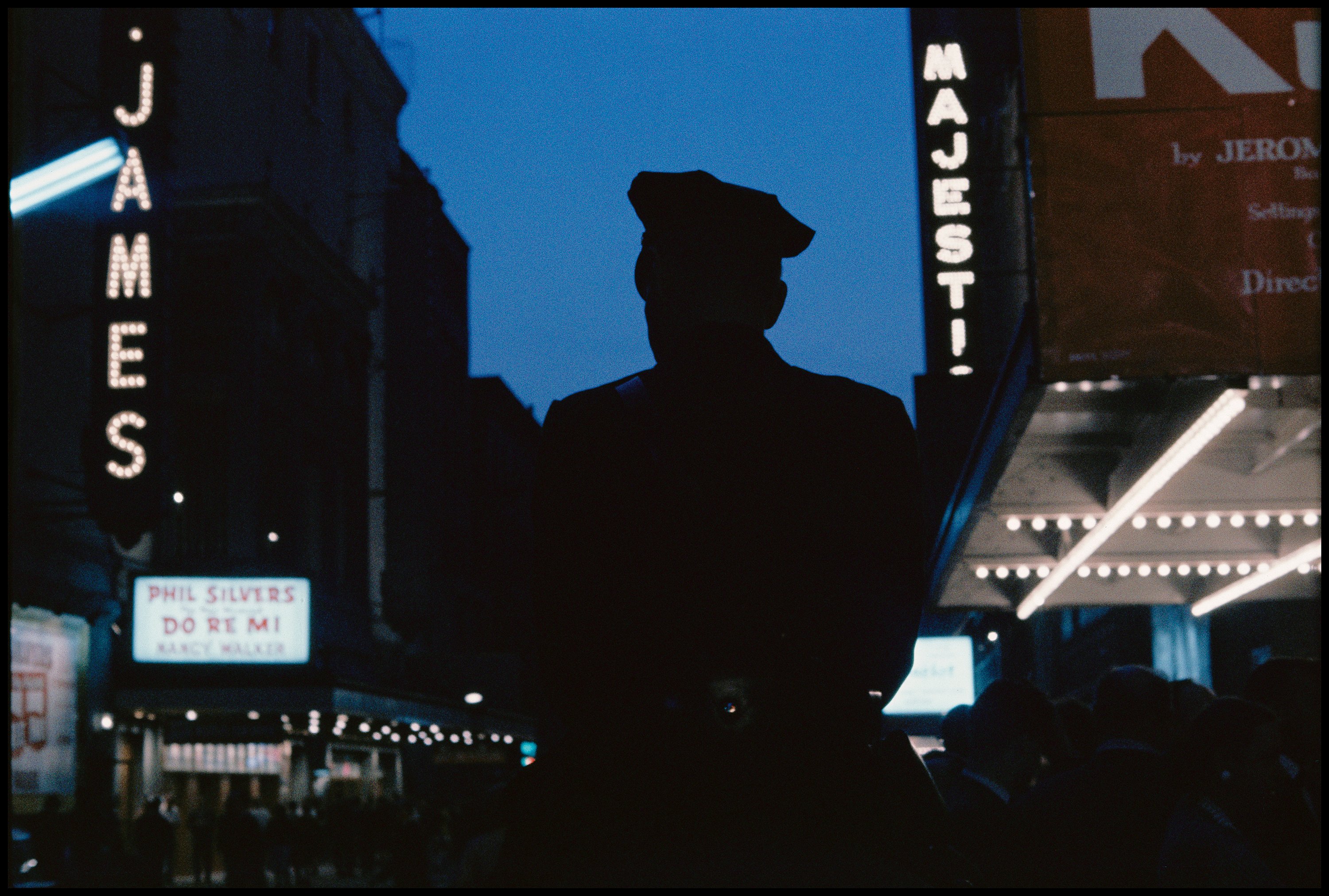
“What do we mean by ‘crime’ in America?”
Bryan Stevenson, founder of the Equal Justice Initiative, poses this question in an essay that opens an important new book of crime photos by the late Gordon Parks.
“From the beginning, the prosecution and punishment of crime in this country have been profoundly shaped by race, poverty, power, and status,” Stevenson writes. “For centuries politicians have stoked fear of crime and exploited perceived crime waves, while our public discourse about crime has been compromised by persistent inattention to our history of racial violence. There is a different narrative about ‘crime in America’ that we have for the most part ignored.”
Photograph by Gordon Parks. Courtesy of and copyright The Gordon Parks Foundation.
Some 60 shots from this prescient series—including the dozen that made it into the LIFE article—are featured in The Atmosphere of Crime, 1957, the book co-published in June by the Gordon Parks Foundation and the Museum of Modern Art. (The photos had been slated to go on view at MoMA this spring before the lockdown hit.)
Parks’s ability to convey social and psychological subtleties with the camera, a notoriously exploitative instrument, is unrivaled, and his mastery is on full display here. In one memorable image, a cigarette hangs from a hand resting on prison bars. In another, a police officer is silhouetted against marquee lights in the gloaming.
Indeed, the photographs are extremely stylish. Looking at Parks’s artfully composed crime photos now, under the patina of time gone by, and it’s tempting to read them as stills from a gritty noir flick: a pair of suit-and-tie cops kick down a door in one shot; in another, a thin pistol dangling from the arm of a dark figure is framed by a sliver of tungsten light from an apartment complex hallway.
But linger a little longer and a more sobering reality surfaces. We see white police officers cuffing black men and the overstuffed corridors of a prison. A mortician with a cigarette in his mouth pulls a corpse from a drawer. A man injects heroin into his swollen, belt-choked arm.
Photograph by Gordon Parks. Courtesy of and copyright the Gordon Parks Foundation.
Parks’s pictures were among the first widely circulated crime photographs ever taken in color, a fact that is in itself a layered metaphor: for the artist’s nuanced take on both the racial dynamics underscoring the subject matter and, as critic Bill Shapiro pointed out in The Atlantic, the right-vs-wrong, good-guy-vs-bad-guy narrative typically ascribed to depictions of police.
“Until that point, crime photos had been predominantly rendered in black and white,” Shapiro writes, “literally in black-and-white film, but also communicating a hyper-clear sense of who was victim and who was criminal, as well as bolstering the paternal role of law enforcement.”
Today we recognize this narrative as a tool of reinforcing the status quo power structure. Back then, Parks did too. As much as his photographs are concerned with the story of crime, they’re just as concerned with who’s telling it.
“We face critically important questions involving how to think about crime and criminal justice reform in America today, and we must confront the truth about how we arrived here in order to move forward toward a more just system,” writes Stevenson. “As we examine our history of racial injustice and its legacy for discourse about crime, there is no better lens through which to see truth and wisdom than the artistry of Gordon Parks.”
See more photos from The Atmosphere of Crime, 1957 below.
Photograph by Gordon Parks. Courtesy of and copyright the Gordon Parks Foundation.
Photograph by Gordon Parks. Courtesy of and copyright the Gordon Parks Foundation.
Photograph by Gordon Parks. Courtesy of and copyright the Gordon Parks Foundation.
Photograph by Gordon Parks. Courtesy of and copyright the Gordon Parks Foundation.
Photograph by Gordon Parks. Courtesy of and copyright the Gordon Parks Foundation.
Photograph by Gordon Parks. Courtesy of and copyright the Gordon Parks Foundation.
Photograph by Gordon Parks. Courtesy of and copyright the Gordon Parks Foundation.